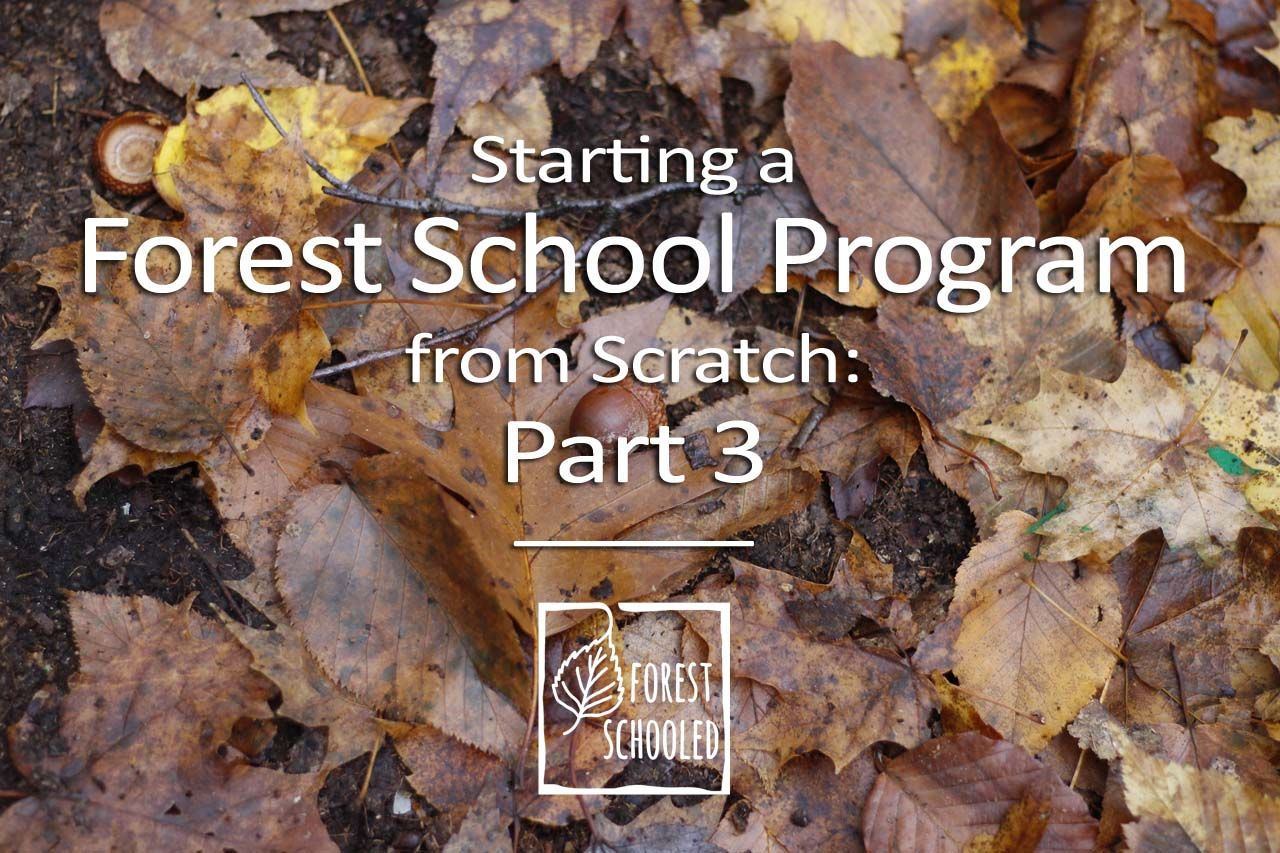
Blog
Stories from my personal journey learning about and delivering Nature-rooted programs across three different countries
Starting a Forest School program from scratch: Part 3
Caylin (Forest Schooled)

Empty space, drag to resize
Preface: I've called the first post in this series "Part 1", but a friend reminded me that there is so much more that comes before this part of starting a Forest School program. The Forest School training I completed a couple of years ago and the ongoing research, discussion, and reflection around the Forest School ethos I've done since then has really been my "Part 1." This was and continues to be the crucial part that helps me appreciate the deep meaning and purpose within Forest School pedagogy (please read Forest School as a mindset... as well as a set of activities for more about this). This series, Starting a Forest School Program from Scratch, is not intended to be a guide or short cut for others to follow, because there is no such thing. My intention is rather to continue sharing my own journey in the hopes that it might resonate with and support others on their Forest School journeys too.
With love,
Forest Schooled

Wow, I've finally made it to part 3 of this venture in starting a Forest School program from scratch. Check out part 1 and part 2 if you need to catch up with what's been done to get to this point. To recap... In Part 1, I created a proposal document to share with organizations and schools to generate interest in a Forest School program. In Part 2, I'd managed to get a local organization on board to offer a series of 6 pilot sessions and was started to think about what resources and equipment I needed to get this going.
Since that last post, I've also managed to connect with a local school who is in need of an after school program. I proposed the Forest School concept to them and they loved it - so that's another program in the works!
Now that the proposals have been accepted, I've been working on the nitty gritty details of all the behind the scenes work that needs to be done to get programs like this going, including Risk Benefit Assessments, Ecological Impact Assessments, and Policies & Procedures.
I wanted to share those documents with you, though I decided to upload them as templates rather than as the fully completed versions I've created for my programs (however, there's a few tips & helpful hints within them...). My reasoning for this is because I found it to be such a valuable process to think through the risks and impacts myself rather than have a prefilled form all ready for me. It meant I had to be the one weighing things up and making decisions about what exactly I was going to do and not do, really taking into consideration the specifics of the sites and needs of the groups I'll be working with. Though tedious, it gave me a better grasp of things and I definitely feel my programs will be stronger because of it.
So please find more information about these documents below:
Risk Benefit Assessment Template
This is a framework I was introduced to in the UK and have carried forward with my work in North American context. In all contexts/countries I’ve worked I have found Risk Benefit Assessments to be a valuable tool for communicating the value of Forest School to those who are apprehensive about the inherent risks in outdoor play. It has also been an educational tool to help explain the “why” and get others on board with the approach. Additionally, I think the process of writing a Risk Benefit Assessment can help us better understand, predict, and address risks in a way that helps safeguard quality of the movement as a whole. This is the template I use, though please be sure to follow guidelines and legal framework set out in your own context.
Ecological Impact Assessment
Ecological Impact Assessments give the opportunity to get to know a site better and learn more about its history, present day meaning, and to evaluate how your actions will impact its future. I have come across several variations of Ecological Impact Assessment forms and their content varies from place to place (as to be expected!). Therefore, I’ve chosen not to include a template here, but offer a few suggestions of what you may want to include - be sure to adapt to your place and context should you decide to use these ideas in your own setting!
- Name and address of site
- Site map and photographs
- Acknowledgement of Indigenous land and territories
- Identified stakeholders
- Geographical features (climate zone, natural communities, local watershed, natural/built features)
- Species and elements (trees, plants, fungi, birds, mammals, insects, soil, bedrock/surface rock)
- Historical uses/relationships with the land (Agriculture? Development? Recreation?)
Policies & Procedures Outline
Similarly, to the Ecological Impact Assessment, Policies and Procedures will also vary from place to place. The following list can be used to aid your own thinking around what you should/shouldn’t include in your own circumstances. Again, considerations should be made for your place and context in deciding what policies/procedures are needed.
Hope that's helpful to people! Feel free to leave a comment and let me know what stage of the process you're in and whether there's any additional resource you'd find useful!
More Posts
WANT TO GET FOREST SCHOOLED TOO?
Subscribe to my email letters, something special from me to you so we can learn together. Each one is filled with heart-felt stories from the forest, resources you may find useful, and things that hopefully bring a smile too.
Thank you!
© by FOREST SCHOOLED
